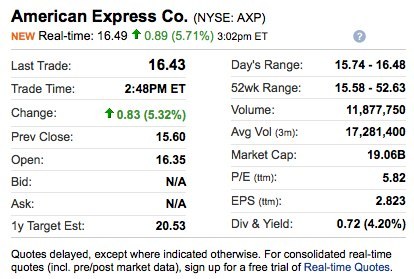Table of ContentsAbout A City Could Issue Which Type Of Bond? QuizletWhat Does How To Find The Beta For A Bond Finance Do?What Does What Is Bond In Finance With Example Do?See This Report on What Does The France Bond Market Finance
In financing, a bond is an instrument of insolvency of the bond company to the holders. The most typical types of bonds include community bonds and business bonds. Bonds can be in shared funds or can be in personal investing where an individual would provide a loan to a company or the federal government.
Interest is normally payable at fixed periods (semiannual, annual, in some cases monthly). Really typically the bond is negotiable, that is, the ownership of the instrument can be moved in the secondary market. This indicates that once the transfer representatives at the bank medallion stamp the bond, it is highly liquid on the secondary market.
Bonds supply the customer with external funds to finance long-term investments, or, in the case of government bonds, to fund present expenditure. Certificates of deposit (CDs) or short-term industrial paper are thought about [] to be cash market instruments and not bonds: the main distinction is the length of the term of the instrument.
Being a financial institution, bondholders have concern over shareholders. This suggests they will be paid back in advance of stockholders, but will rank behind protected creditors, in case of insolvency. Another difference is that bonds usually have actually a defined term, or maturity, after which the bond is redeemed, whereas stocks generally remain outstanding indefinitely.
In English, the word "bond" relates to the etymology of "bind". In the sense "instrument binding one to pay an amount to another"; use of the word "bond" dates from at least the 1590s. Bonds are provided by public authorities, credit institutions, business and supranational institutions in the main markets.
When a bond concern is underwritten, several securities firms or banks, forming a distribute, purchase the whole issue of bonds from the company and re-sell them to investors. The security company takes the danger of being not able to sell on the concern to end investors. Main issuance is set up by who organize the bond problem, have direct contact with financiers and act as advisers to the bond provider in terms of timing and rate of the bond problem.
The bookrunners' willingness to underwrite must be discussed prior to any choice on the terms of the bond issue as there might be restricted demand for the bonds. In contrast, government bonds are usually issued in an auction. Sometimes, both members of the public and banks may bid for bonds.
The 8-Minute Rule for What Is Bond Rating Finance
The overall rate of return on the bond depends upon both the regards to the bond and the price paid. The regards to the bond, such as the discount coupon, are fixed ahead of time and the rate is figured out by the market. When it comes to an underwritten bond, the underwriters will charge a cost for underwriting.
Bonds offered straight to purchasers might not be tradeable in the bond market. Historically an alternative practice of issuance was for the borrowing government authority to release bonds over a time period, generally at a repaired cost, with volumes sold on a specific day reliant on market conditions. This was called a tap problem or bond tap.
Treasury Bond Nominal, principal, par, or face quantity is the quantity on which the issuer pays interest, and which, a lot of typically, needs to be paid back at the end of the term. Some structured bonds can have a redemption amount which is various from the face quantity and can be linked to the efficiency of specific properties.
As long as all due payments have actually been made, the company has no more obligations to the bond holders after the maturity date. The length of time until the maturity date is frequently described as the term or tenor or maturity of a bond. The maturity can be any length of time, although debt securities with a regard to less than one year are typically designated cash market instruments rather than bonds.
Some bonds have been issued with regards to 50 years or more, and traditionally there have actually been some issues with no maturity date (irredeemable). In the market for United States Treasury securities, there are 4 categories of bond maturities: short term (bills): maturities between zero and one year; medium term (notes): maturities in between one and 10 years; long term (bonds): maturities between 10 and thirty years; Continuous: no maturity Period.
For selling timeshares jobs repaired rate bonds, the discount coupon is repaired throughout the life of the bond. For floating rate notes, the voucher varies throughout the life of the bond and is based upon the movement of a cash market recommendation rate (often LIBOR). Historically, vouchers were physical accessories to the paper bond certificates, with each discount coupon representing an interest payment.

Today, interest payments are nearly constantly paid electronically. Interest can be paid at different frequencies: typically semi-annual, i.e. every 6 months, or yearly. The yield is the rate of return gotten from purchasing the bond. It usually refers either to: The present yield, or running yield, which is merely the annual interest payment divided by the existing market value of the bond (frequently the tidy cost).
A City Could Issue Which Type Of Bond? Can Be Fun For Everyone

Since it takes into consideration the present worth of a bond's future interest payments, it is a more precise step of the return on a bond than current yield. The quality of the issue describes the possibility that the bondholders will get the amounts guaranteed at the due dates.
This will depend on a large range of elements. High-yield bonds are bonds that are rated below investment grade by the credit ranking companies. As these bonds are riskier than investment grade bonds, investors anticipate to earn a higher yield. These bonds are likewise called scrap bonds. The market price of a tradable bond will be affected, to name a few factors, by the quantities, currency and timing of the interest payments and capital payment due, the quality of the bond, and the available redemption westlake financial florida yield of other equivalent bonds which can be traded in the markets - what is callable bond in finance.
" Dirty" consists of the present worth of all future money flows, consisting of accumulated interest, and is frequently used in Europe. "Clean" does not consist of accrued interest, and is usually utilized in the U.S. The issue cost at which financiers buy the bonds when they are very first provided will normally be roughly equivalent to the small amount.
The marketplace cost of the bond will vary over its life: it may trade at a premium (above par, normally since market rates of interest have fallen given that concern), or at a discount (price listed below par, if market rates have actually increased or there is a high probability of default on the bond).
Covenants specify the rights of shareholders and the tasks of providers, such as actions that the issuer is obligated to perform or is forbidden from performing - what is the coupon bond formula in finance. In the U.S., federal and state securities and business laws apply to the enforcement of these arrangements, which are interpreted by courts as contracts in between companies and shareholders.
Optionality: Occasionally a bond may include an embedded alternative; that is, it grants option-like functions to the holder or the issuer: CallabilitySome bonds offer the provider the right to pay back the bond prior to the maturity date on the call dates; see call alternative. These bonds are referred to as callable bonds.
With some bonds, the provider has to pay a premium, the so-called call premium. This is generally the case for high-yield bonds. These have really stringent covenants, limiting the issuer in its operations. To be complimentary from these covenants, the company can repay the bonds early, however just at a high expense.
The 15-Second Trick For What Is Bond Rating Finance
These are referred to as retractable or putable bonds. Call dates and put datesthe dates on which callable and putable bonds can be redeemed early. There are 4 main classifications: A Bermudan callable has numerous call dates, normally accompanying discount coupon dates. A European callable has only one call date.
An American callable can be called at any time till the maturity date. A death put is an optional redemption feature on a debt instrument permitting the recipient of the estate of a departed bondholder to put (sell) the bond back to the company at face worth in the event of the shareholder's death or legal incapacitation.